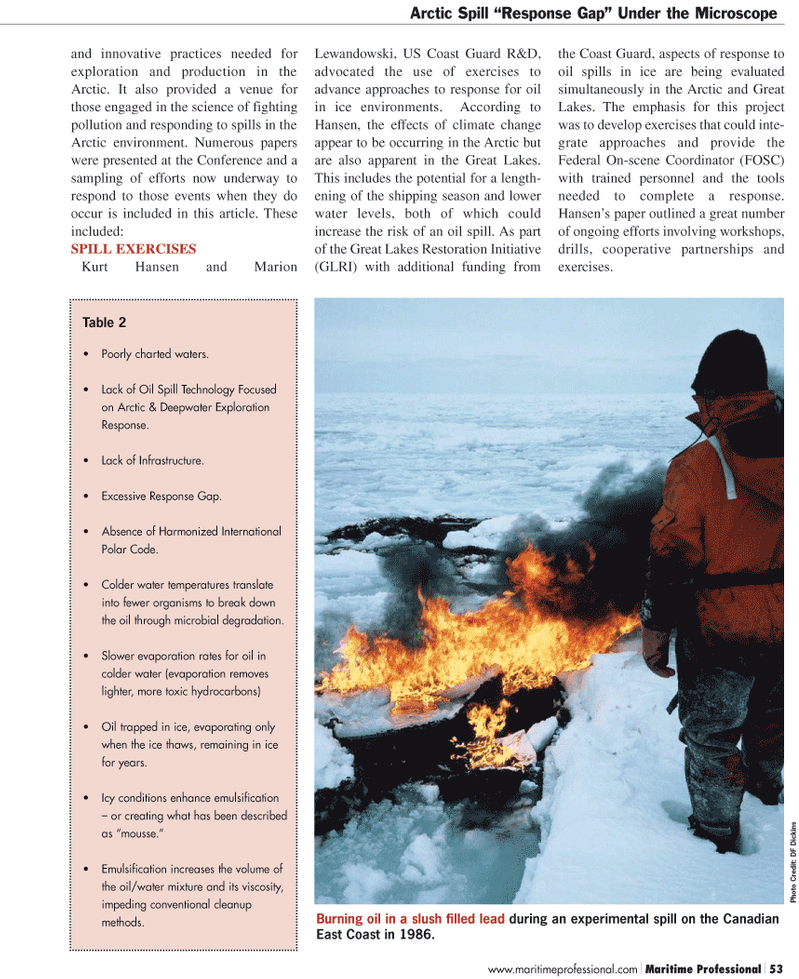
Page 53: of Maritime Logistics Professional Magazine (Q2 2011)
Energy Transportation
Read this page in Pdf, Flash or Html5 edition of Q2 2011 Maritime Logistics Professional Magazine
www.maritimeprofessional.com Maritime Professional 53 and innovative practices needed for exploration and production in the
Arctic. It also provided a venue for those engaged in the science of fighting pollution and responding to spills in the
Arctic environment. Numerous papers were presented at the Conference and a sampling of efforts now underway to respond to those events when they do occur is included in this article. These included:
SPILL EXERCISES
Kurt Hansen and Marion
Lewandowski, US Coast Guard R&D, advocated the use of exercises to advance approaches to response for oil in ice environments. According to
Hansen, the effects of climate change appear to be occurring in the Arctic but are also apparent in the Great Lakes.
This includes the potential for a length- ening of the shipping season and lower water levels, both of which could increase the risk of an oil spill. As part of the Great Lakes Restoration Initiative (GLRI) with additional funding from the Coast Guard, aspects of response to oil spills in ice are being evaluated simultaneously in the Arctic and Great
Lakes. The emphasis for this project was to develop exercises that could inte- grate approaches and provide the
Federal On-scene Coordinator (FOSC) with trained personnel and the tools needed to complete a response.
Hansen’s paper outlined a great number of ongoing efforts involving workshops, drills, cooperative partnerships and exercises.
Arctic Spill “Response Gap” Under the Microscope
Burning oil in a slush filled lead during an experimental spill on the Canadian
East Coast in 1986.
Photo Cr edit: DF Dickins
Table 2 • Poorly charted waters. • Lack of Oil Spill Technology Focused on Arctic & Deepwater Exploration
Response. • Lack of Infrastructure. • Excessive Response Gap. • Absence of Harmonized International
Polar Code. • Colder water temperatures translate into fewer organisms to break down the oil through microbial degradation. • Slower evaporation rates for oil in colder water (evaporation removes lighter, more toxic hydrocarbons) • Oil trapped in ice, evaporating only when the ice thaws, remaining in ice for years. • Icy conditions enhance emulsification – or creating what has been described as “mousse.” • Emulsification increases the volume of the oil/water mixture and its viscosity, impeding conventional cleanup methods.

 52
52

 54
54
